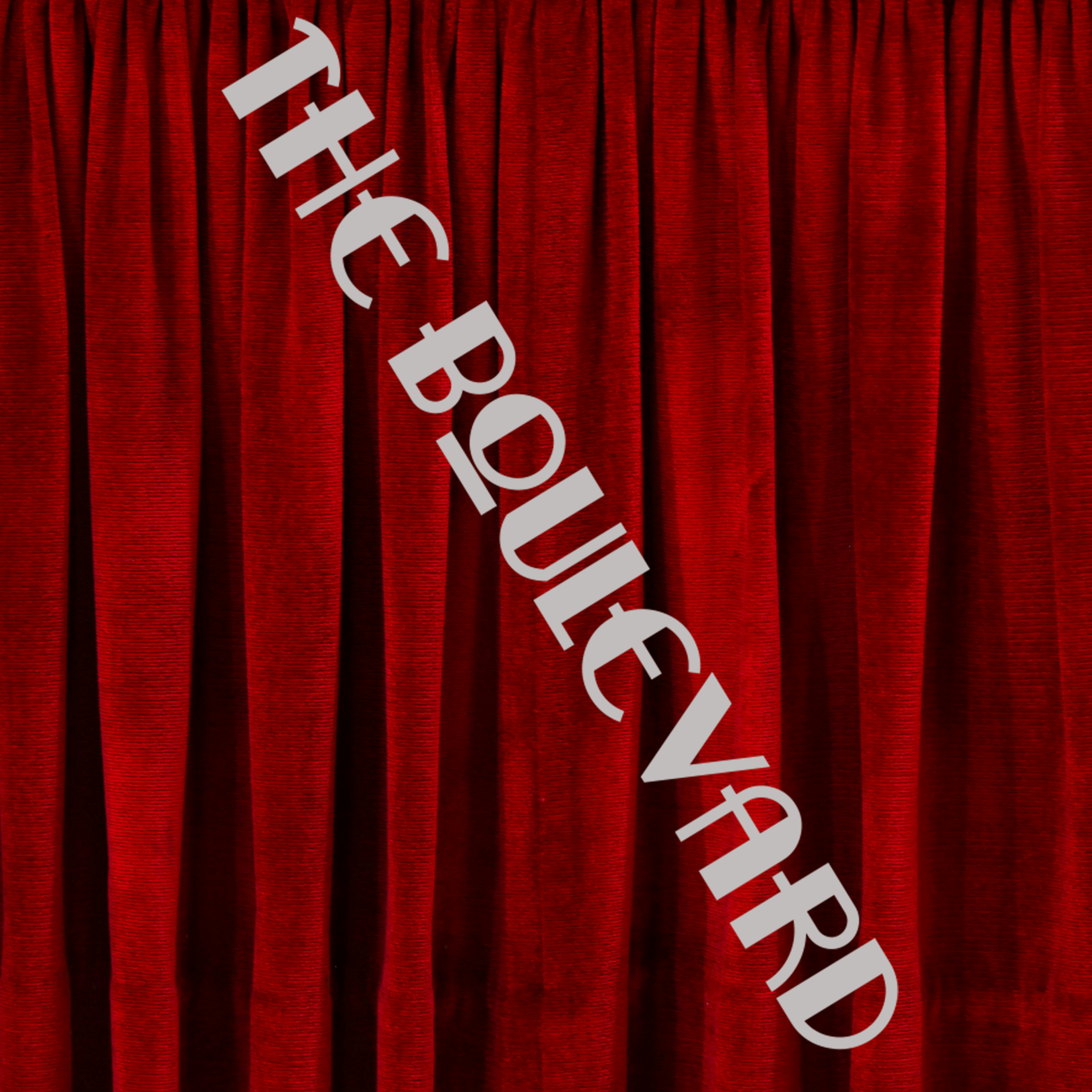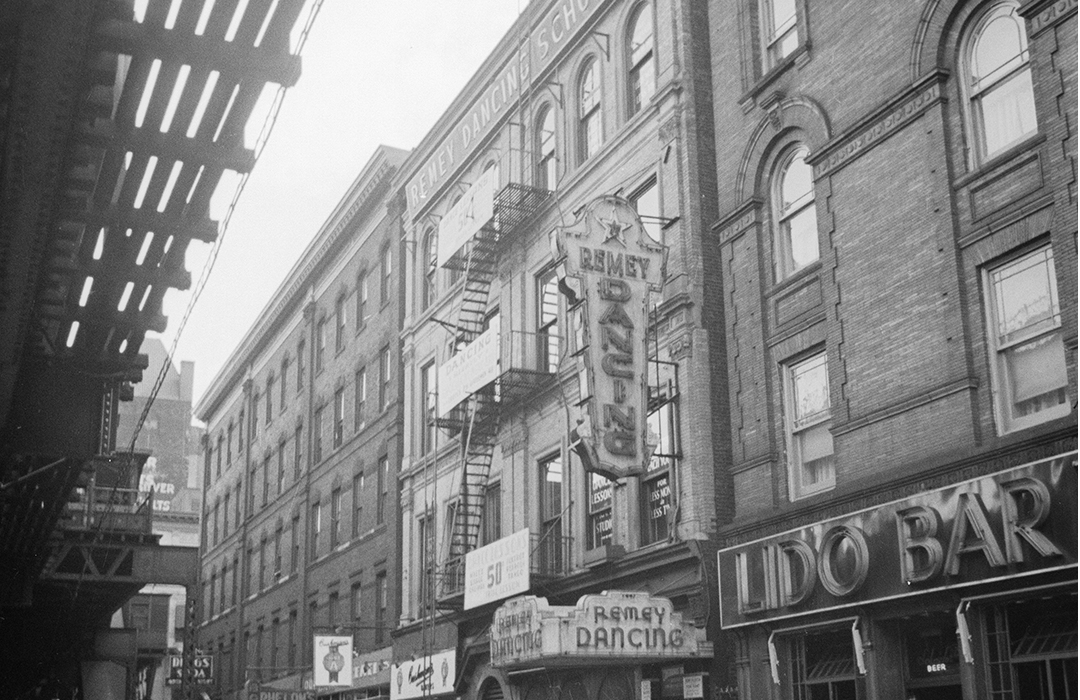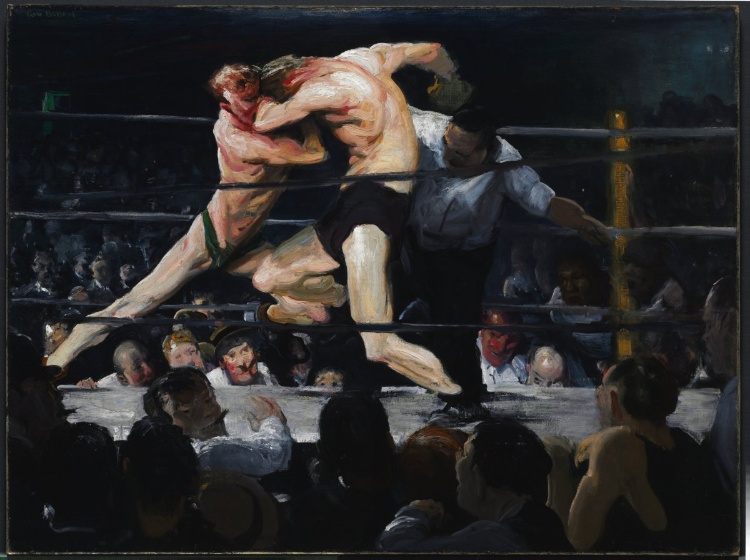
127-129 Columbus Avenue
by Tom Miller
In 1896, two years after architect Julius Munckwitz designed the lavish Hotel Marie Antoinette at the corner Broadway and 66th Street, he filed plans for a “two-story lecture hall and stores” a block to the north, at 127-129 Columbus. Above the cast iron storefront, the building (which cost developer Albert Crane $15,000 to erect), was faced in “yellow brick and limestone.” The cost would translate to above half a million in 2024 dollars.
The building was completed in 1897 and Crane leased it in June to Otten & Flagge, composed of Charles Otten and Harry A. Flagge. The men apparently had bigger aspirations for the property, and it seems they negotiated an enlargement of the building in their lease. Within a month, Crane had brought Julius Munckwitz back to add two more stories, doubling its height. Munckwitz’s seamless addition carried on his design with brick piers that terminated in terra cotta capitals and intermediate cornices between each floor. The fourth-floor windows were fully arched, providing a contrast with the square-headed openings of the lower floors.
What had originally been planned as “lecture halls” were leased to a wide variety of tenants. Among the earliest was the Metropolitan Dancing Academy. An advertisement in November 1897 offered:
Perfect waltz and two-step guaranteed in 6 private lessons, $5 at pupil’s convenience; learn correctly from beginning. It saves time; money, labor, disappointment; select class, monthly, $1; quarterly, $5; also stage dancing.
Other tenants were Frank Sherwood’s Metropolitan Billiard Academy and the clubrooms of the Nineteenth Democratic District. On October 10, 1903, The Tammany Times reported, “the delegates to the Nineteenth District Democratic Assembly convention met last Tuesday night at 127 Columbus avenue and nominated for Assemblyman F. E. P. Lynde.” The following night they met and nominated Augustus T. Gillender for alderman.
in 1907 Irish-born pugilist Tom Sharkey opened Sharkey’s Athletic Club
A perhaps unexpected tenant came in the winter of 1906. On December 13, The New York Age reported, “On Monday night at 127 and 129 Columbus avenue, Mr. T. B. Pursley will open a first-class roller skating ring for Afro-American people. This is the first rink of its kind in New York…A full orchestra will be in attendance.” The article stressed that the venue was for “Afro Americans only.” Admission cost 50 cents, “including skates.”
While skaters whirled in circles on one floor, in 1907 Irish-born pugilist Tom Sharkey opened Sharkey’s Athletic Club on another. Born in Dundalk, Ireland on New Years Day 1871, Sharkey came to New York City in 1892. He started boxing while serving in the U.S. Navy, eventually becoming heavyweight champion. He retired in 1905 and opened his “athletic club” here two years later. Because boxing was illegal, venues like Sharkey’s charged a “membership fee” at the door and handbills noted that the contestants were “both members of this club.”
The ruse did not stop the police from raiding Sharkey’s and in the fall of 1907, Tom Sharkey had had enough. He had summonses issued for Inspector Richard Walsh and Captain John J. Farrell of the West 68th Street station, “to answer charges of maliciously oppressing the officers and members of the Sharley Athletic Club of 127 Columbus Avenue,” according to The New York Times on October 13. The complaint charged that the two had forced entrance to the club the previous Friday night, “assaulting members in order to do so.”
The badgering by police continued, however. On May 26, 1909, for instance, The New York Times reported that the club’s manager, James Buckley, “was convicted…of participating in a prize fight at the club on Nov. 20, 1907, and fined $25.” A regular patron was 25-year-old artist George Bellows, whose studio was not far away. He memorialized Sharkey’s Athletic Club in 1909 with his painting Stag at Sharkey’s. (A stag was the term for the temporary membership the patrons were handed.)
Tragedy struck on April 10, 1912. Middleweight fighter Johnny Goldberg, who fought under the name “Kid Beecher,” went four rounds with “Bull” Cafferty that night. He was declared the winner of the match, but afterward, while his handler was removing the tape from his fingers, Goldberg collapsed unconscious. He was taken to Flower Hospital, where he died the following morning. Oddly, doctors merely said his death “had probably been caused by over-exertion.”
On November 25, 1915, The Sun began an article saying, “Douglas Fairbanks, actor, burst into the Sharkey Athletic Club, Columbus avenue and Sixty-fifth street, last night and insisted on challenging Battling Burke, who had just knocked out Knockout Smith, for the middleweight championship.” Incredulous readers soon realized the article was about the filming of a silent movie, His Picture in the Papers, here. The role of Knockout Smith was played by real-life boxer Jack Denning.
In the meantime, there were two stores on the ground floor. In 1917 Louis Berman moved his furniture showroom and office into 129 Columbus Avenue, while a barbershop run by Salvatore de Jovanni occupied the other store.
Midcentury saw three technical schools here–the Taus School of Watchmaking, the Kerpel School of Dental Technology, and the Radio-Television Institute.
The post-World War I years saw turnover in tenants. The two commercial spaces were occupied by the Central Lunch and Bakery and the Century Restaurant. On the second floor (most likely where the Metropolitan Dance Academy had been) was Remey’s School for Dancing, founded by Ethel A. Remey. Upstairs, the Guiding Star Lodge of the Independent Order of Odd Fellows had its clubrooms here in 1920, as did the United Spanish War Veterans’ Sergeant Hamilton Fish Camp No. 46.
On March 21, 1924, The Retail Baker reported, “One hundred persons who were eating a late lunch at about 3:30 in the morning, escaped payment of their checks when fire broke out in Remey’s Dancing School at 127 Columbus Avenue.” While the fire was quickly extinguished, the patrons of the two restaurants, nevertheless, ate for free that night.
Midcentury saw three technical schools here–the Taus School of Watchmaking, the Kerpel School of Dental Technology, and the Radio-Television Institute. The latter two were operated by Julius A. Kerpel. With veterans returning from the Korean and Vietnam wars, the Kerpel School of Dental Technology offered occupational training to former soldiers in the 1960s.
Julius A. Kerpel would have to find other locations for his schools in 1973 when the block was demolished to be replaced by a 36-story residential building known as 2 Lincoln Square.
Tom Miller is a social historian and blogger at daytoninmanhattan.blogspot.com
BUILDING DATABASE
Keep Exploring
Be a part of history!
Think Local First to support the businesses at 127-129 Columbus (Currently 2 Lincoln Square):



